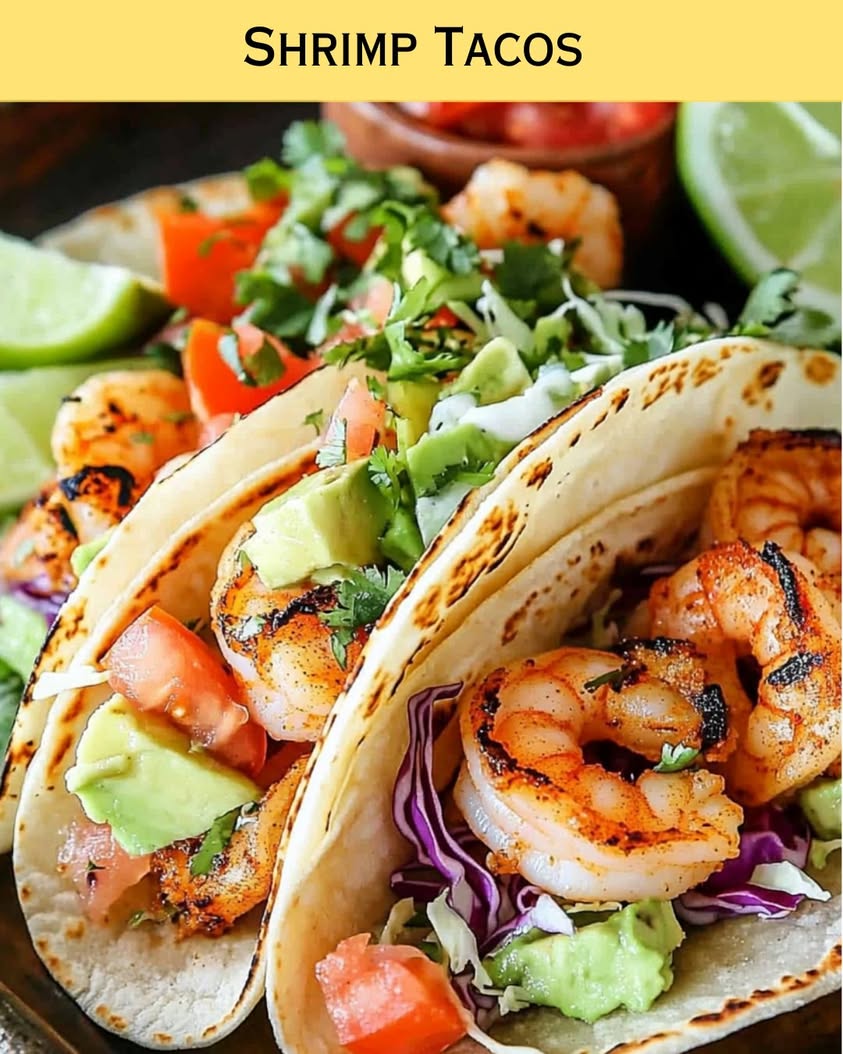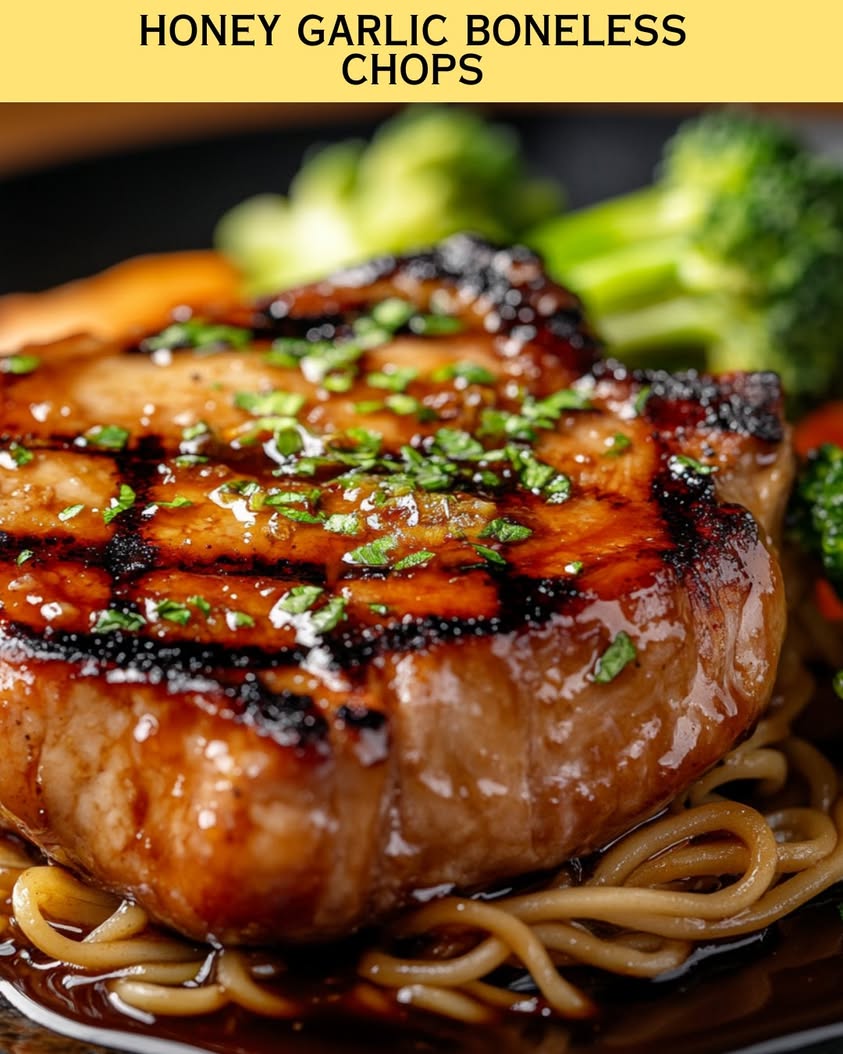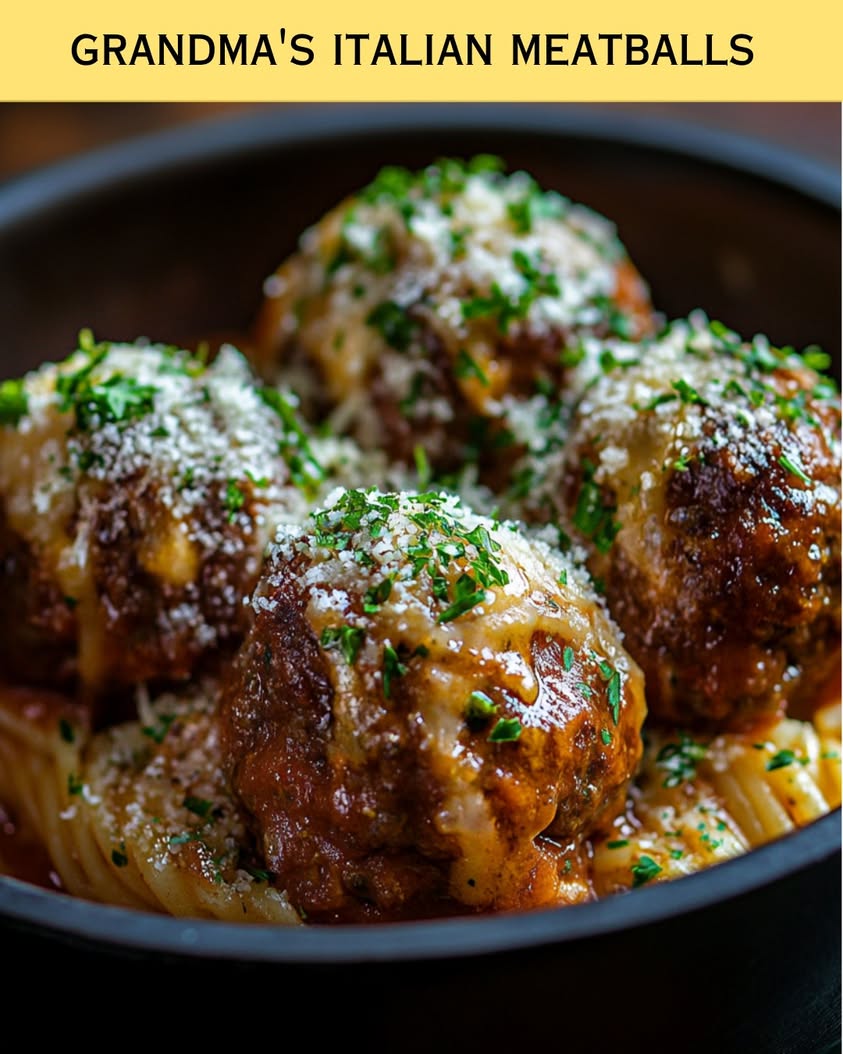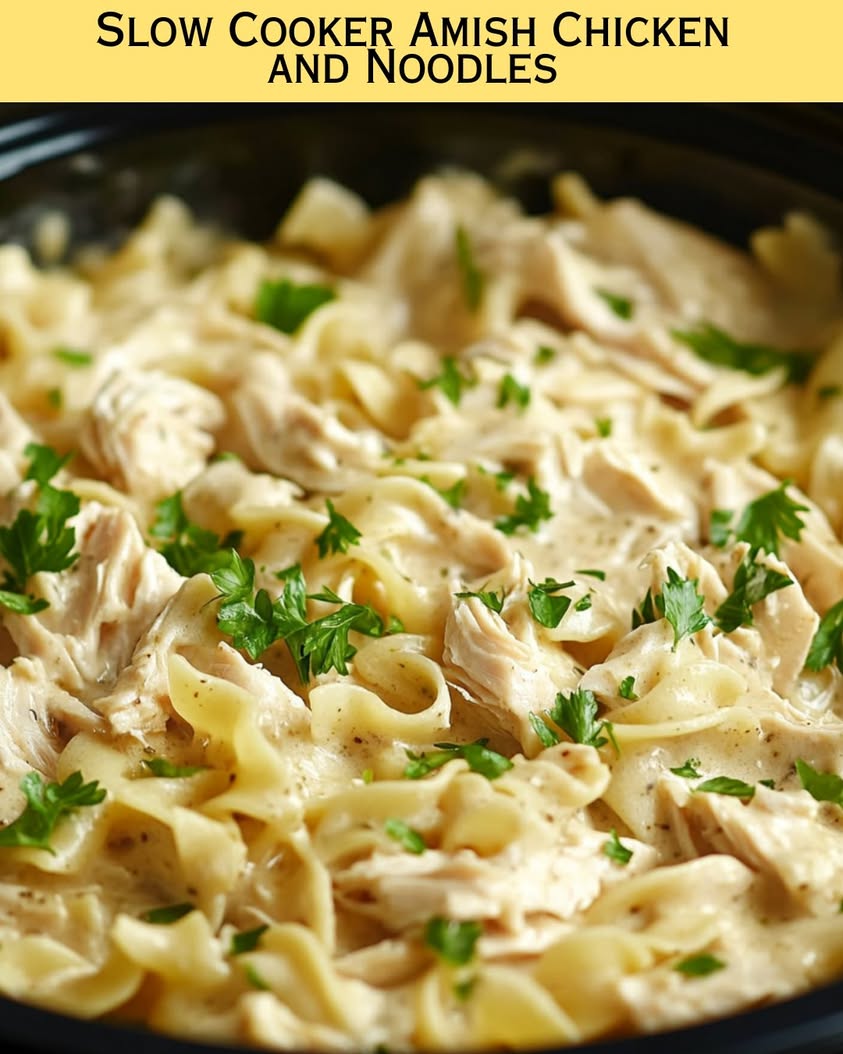Savory Shrimp Tacos: A Flavorful Delight
Shrimp tacos are a fantastic dish, perfect for anyone who loves vibrant flavors and fresh ingredients. These delightful tacos offer a tantalizing combination of juicy shrimp, zesty lime, and crisp vegetables, all wrapped in a warm tortilla. The appeal lies not only in their incredible taste, but also in their colorful presentation, offering a feast for both the eyes and the palate.
As you prepare these shrimp tacos, the aromas of sautéing shrimp mingled with spices invite anticipation and excitement. Each bite delivers a burst of flavor, with perfectly seasoned shrimp that contrast with the coolness of fresh toppings like avocado and cilantro. Picture a sunny day, friends gathered around, sharing these tasty tacos—it’s a fantastic way to enjoy warm weather and create lasting memories.
Quick Recipe Highlights
- Flavor Profile: The shrimp are marinated in a mixture of spices and lime, providing a zesty kick that perfectly complements the sweetness of the shrimp.
- Texture: The combination of tender shrimp and crunchy vegetables creates a delightful contrast, making each taco a mouthwatering experience.
- Aroma: The tantalizing aroma of sautéed shrimp mixed with spices will awaken your senses, making it impossible to resist.
- Visual Appeal: Brightly colored toppings like red cabbage and green cilantro add visual flair to your shrimp tacos, making them as beautiful as they are delicious.
- Skill Level Needed: This recipe is easy enough for beginners, requiring only basic cooking skills and minimal kitchen equipment.
- Special Equipment: You will need a frying pan and tongs to prepare these tacos, making it accessible for any home cook.
Recipe Overview
- Difficulty Level: The shrimp taco recipe is categorized as easy, requiring just straightforward steps and simple ingredients that anyone can master.
- Category: These tacos are great for lunch, dinner, or even as a party appetizer, making them versatile for various meals.
- Cuisine: Originating from Mexican cuisine, shrimp tacos are now enjoyed internationally, reflecting diverse culinary traditions and flavor profiles.
- Cost: The recipe is affordable, with shrimp being the primary ingredient, and the rest of the ingredients are commonly found in most kitchens.
- Season: These shrimp tacos are perfect for warm weather, but can be enjoyed year-round, especially in coastal regions.
- Occasion: Whether it’s a casual family dinner or a lively gathering with friends, shrimp tacos are always a hit.
Why You’ll Love This Recipe
Shrimp tacos offer an irresistible taste sensation that balances savory and zesty notes, making for a truly enjoyable meal. The combination of succulent shrimp with fresh toppings creates a delightful explosion of flavors in every bite. Each taco is a delightful experience, where warmth and crunch come together perfectly, appealing to those who love different textures in their food.
In terms of convenience, this recipe is a breeze to prepare. With a quick prep time of just 15 minutes and a cook time of 10 minutes, you can whip up these shrimp tacos in under half an hour. This makes them an excellent option for busy weeknight dinners, as well as for spontaneous gatherings with friends.
Nutritionally, shrimp is an excellent source of protein and provides key nutrients like omega-3 fatty acids. By incorporating fresh vegetables, these tacos not only satisfy your cravings but also contribute to a balanced meal.
Socially, shrimp tacos are perfect for entertaining. They are easy to share, allowing friends and family to build their own tacos to their liking. This interactive dining experience encourages conversation and connection, making gatherings even more special.
Finally, the cost-effectiveness of this recipe stands out. Shrimp, while considered a delicacy, can be purchased at reasonable prices, and the other ingredients are typically budget-friendly. This recipe demonstrates that you can create impressive and flavorful dishes without breaking the bank.
Historical Background and Cultural Significance
The origin of shrimp tacos can be traced back to coastal regions of Mexico, where fresh seafood is a staple in local cuisine. This dish reflects the rich traditions associated with the fishing culture and the celebration of the ocean’s bounty. Over time, as shrimp became popular in various culinary scenes, shrimp tacos evolved from street food to a gourmet experience enjoyed in restaurants worldwide.
Culturally, shrimp tacos are significant as they represent the fusion of flavors and techniques from various regions, enriching the culinary landscape. The way they are prepared, seasoned, and served can vary widely, showcasing local ingredients and preferences, while still maintaining their basic identity.
As this recipe evolved, numerous adaptations emerged, allowing for different types of tortillas and toppings. These variations demonstrate creativity and flexibility, making shrimp tacos an exciting option for any meal.
Today, shrimp tacos have a universal appeal, transcending borders and bringing diverse communities together to enjoy this flavorful dish that honors tradition while inviting innovation.
Ingredient Deep Dive
Shrimp
Shrimp hold cultural significance as a popular seafood worldwide, often associated with coastal living and fresh catches. Nutritionally, shrimp are low in calories yet high in protein, making them an excellent choice for healthy diets. When selecting shrimp, look for firm, translucent shells and a fresh, salty smell. Store shrimp in the refrigerator for up to two days or freeze for longer shelf life. If you can’t find shrimp, consider substituting with grilled chicken or tofu for a different flavor profile.
Tortillas
Tortillas are a staple in Mexican cuisine, with a rich history that dates back thousands of years. They are versatile, used in various dishes beyond tacos. Made from simple ingredients, tortillas provide a base that enhances flavors. When purchasing, opt for freshly made or quality pre-packaged options. Store in a cool, dry place for a few days or refrigerate for longer freshness. If needed, corn or lettuce wraps can serve as alternatives for a gluten-free version.
Common Mistakes to Avoid
- Overcooking the shrimp: Cook only until they turn pink and opaque for optimal texture. Overcooked shrimp can become rubbery.
- Using pre-cooked shrimp: Fresh, uncooked shrimp yield the best flavor and texture; avoid any frozen pre-cooked options.
- Skipping the marinade: Letting the shrimp marinate enhances flavor significantly; don’t skip this step!
- Overloading the tacos: Too many toppings can cause the tacos to fall apart; stick to a moderate amount to maintain structure.
- Not warming the tortillas: Soft, warm tortillas elevate the taco experience; heat them just before serving.
- Ineffectively chopping toppings: Ensure uniform cuts for even distribution and texture balance in every bite.
- Using too many spices: While seasoning is crucial, moderation is key; avoid overwhelming the shrimp’s natural flavor.
- Failing to taste as you go: Check flavors during preparation to adjust seasoning according to your preference.
Essential Techniques
Marinating Shrimp
Marinating shrimp not only infuses them with flavor but also helps to tenderize them. To master this technique, use a blend of spices, citrus juice, and a bit of oil to impart flavor. Avoid marinating for too long, as this can lead to mushy shrimp; a 15-30 minute soak is ideal. Look for the shrimp to absorb the marinade, changing in color and fragrance as a visual cue.
Cooking Shrimp
For perfect shrimp tacos, mastering the cooking process is crucial. Use a hot pan to quickly sear the shrimp, allowing them to develop a beautiful golden-brown color while retaining moisture. Watch for the color change from gray to pink—this indicates they are done. Timing is essential, so keep a close eye to prevent overcooking.
Pro Tips for Perfect Shrimp Tacos
One tip is to use a mix of different-colored vegetables for added visual appeal and flavor. Bright, fresh toppings like red cabbage, cilantro, and avocado create a beautiful and appetizing presentation.
Another fantastic idea is to let guests customize their tacos with a toppings bar, which includes salsa, lime wedges, and extra spices. This not only enhances the experience but also allows everyone to enjoy their perfect taco.
For extra flavor, consider grilling the shrimp instead of sautéing them for a smoky taste that complements the fresh ingredients.
Make sure to serve the tacos immediately after preparation. Freshly made tacos are always the best; the longer you wait, the more the tortillas will become soggy.
To elevate your shrimp tacos even further, try adding a drizzle of creamy avocado sauce or zesty chipotle mayo for a delicious finishing touch.
Lastly, don’t forget to enjoy with a refreshing beverage, such as a cold beer or a fruity margarita, to complete the taco experience.
Variations and Adaptations
For regional variations of shrimp tacos, consider incorporating local spices and flavors such as Cajun seasoning for a Southern twist or mango salsa for a tropical flair.
Seasonal adaptations could include replacing traditional toppings with seasonal produce like corn in the summer or roasted peppers in the fall, providing a fresh take on this classic dish.
For dietary modifications, you can substitute shrimp with tofu or tempeh for a vegan version or opt for gluten-free tortillas.
Flavor variations such as adding a spicy crema or switching to a different citrus marinade can also transform the dish into something new.
Texture modifications can be introduced with toasted nuts for a crunchier bite or creamy guacamole for a smooth contrast.
Lastly, consider modern serving suggestions like plating the shrimp tacos on a wooden board with small bowls of toppings, enhancing the presentation and making sharing fun.
Serving and Presentation Guide
When plating your shrimp tacos, stack them neatly on a colorful plate or wooden board to create visual interest. Garnishing with fresh cilantro, lime wedges, or even edible flowers elevates the dish’s aesthetic.
Traditional accompaniments like Mexican rice or beans effectively complement the tacos, while modern suggestions might include serving with sweet potato fries for a unique twist.
Temperature plays a significant role; serve shrimp tacos immediately while warm, making sure tortillas stay soft and pliable.
For portion control, consider using small tortillas to create mini tacos, allowing guests to enjoy several flavors without overindulging.
Wine and Beverage Pairing
For a perfect pairing, consider serving these shrimp tacos with a chilled Sauvignon Blanc, which complements the zesty flavors beautifully. The crispness of the wine balances the richness of the shrimp.
If you prefer non-alcoholic options, a refreshing limeade or coconut water can enhance the tropical flavors of the dish while keeping things light.
For those who enjoy a coffee or tea pairing, an iced green tea with mint can cleanse the palate, especially on warmer days.
Serve beverages chilled to match the refreshing nature of the tacos, ensuring guests have a delightful dining experience.
Storage and Shelf Life
To store leftovers effectively, keep the shrimp and toppings separate from the tortillas to maintain texture. Refrigerate shrimp in an airtight container for up to two days.
For tortillas, consider wrapping them in foil and storing in the fridge to prevent them from becoming stale.
Signs of spoilage include an off smell or a slimy texture on the shrimp, so always check before consuming leftovers.
When reheating, do so in a pan over low heat until warmed through, ensuring they remain tender and juicy. Avoid microwaving as it can lead to rubbery shrimp.
If you want to freeze leftovers, do so within 24 hours to maintain freshness. Shrimp can be frozen but are best consumed within a month for optimal flavor.
Make Ahead Strategies
To prepare ahead, consider marinating the shrimp the night before. This enhances flavor and saves time on the day of serving.
Chop and store toppings separately in airtight containers to keep them fresh for a couple of days.
Assess the quality impact when preparing in advance, as fresh toppings may lose crunchiness over time, so plan accordingly.
When assembling, do so just before serving to maintain the taco’s structure and prevent sogginess.
Lastly, if fresh elements like avocado are involved, add them right before serving for the best texture and appearance.
Scaling Instructions
When scaling this recipe, halving the ingredients is simple—just reduce measurement amounts by 50%.
Doubling or tripling the recipe might require adjusting cooking time, as you should ensure even cooking for larger batches.
Keep in mind that the size of your kitchen equipment, like frying pans, may impact how many shrimp you can cook at once efficiently.
When scaling up, consider storage for the leftovers, as they should be kept in a cool place and consumed quickly for the best quality.
Timing modifications may include cooking in batches to avoid overcrowding the pan, which can lead to uneven cooking.
Nutritional Deep Dive
Shrimp tacos provide a nutritious balance of protein and healthy fats. On average, a serving contains approximately 23 grams of protein and very low carbohydrates.
Micronutrient analysis reveals shrimp as an excellent source of selenium, vitamin B12, and iron, contributing to overall health.
Health benefits include supporting heart health due to omega-3 content while being lower in calories compared to other protein sources.
When considering dietary needs, these tacos offer flexibility, allowing for various modifications like adding beans for extra fiber.
Portion analysis encourages mindful eating; enjoy a couple of tacos along with sides such as salad or rice for a satisfying meal without overindulgence.
Dietary Adaptations
For those needing a gluten-free option, simply use corn tortillas instead of flour ones, ensuring a flavorful experience without dietary concerns.
Dairy-free adaptations can replace creamy toppings with homemade guacamole or avocado crema, preserving richness without dairy.
Vegan adaptations could substitute shrimp with spiced jackfruit or marinated tofu for a similar texture and robust flavor.
Low-carb options can utilize lettuce wraps for the shrimp and toppings instead of tortillas, providing a fresh delivery method.
Consider a keto adaptation by grilling shrimp with high-fat toppings like avocado or a creamy dressing made from oil and spices.
Troubleshooting Guide
Common texture issues in shrimp tacos can stem from overcooking. Always monitor shrimp closely and remove from heat once opaque for best results.
Flavor imbalance may occur if too much salt or spices are added; tasting during cooking ensures balance is achieved.
If temperature problems arise, heat tortillas separately in a pan to maintain their softness and prevent tearing.
Equipment challenges, such as non-stick pans, may require additional oil to prevent sticking; try grapeseed or canola oils for higher smoke points.
For ingredient substitutions, ensure to adjust cooking times when replacing shrimp with other proteins, especially if switching to chicken or vegetarian alternatives.
Timing concerns can significantly affect freshness; prepare ingredients in advance to allow for quick assembly at mealtime.
Recipe Success Stories
Community feedback reveals that these shrimp tacos are a crowd favorite at parties, often requested for family gatherings and summer barbecues.
Variations praised include spicy chipotle shrimp tacos, demonstrating adaptability to personal taste preferences.
Adaptation stories highlight how readers have successfully incorporated seasonal ingredients, like fresh corn, creating simpler versions without compromising on flavor.
Suggestions also include pairing tacos with unique salsas, inspiring creativity and exploration in home cooking.
Photography tips shared by readers emphasize capturing vibrant colors and textures to enhance visual appeal when sharing these delicious tacos on social media.
Frequently Asked Questions
1. Can I use frozen shrimp for this recipe?
Yes, you can use frozen shrimp, but ensure they are defrosted completely before cooking to achieve the best results.
2. How do I know when shrimp is cooked?
Shrimp is cooked when it turns opaque and pink. Additionally, it should form a tight “C” shape instead of an “O” when done.
3. Can I prepare the shrimp in advance?
Yes, marinating shrimp a few hours ahead of time enhances flavor, but cook them just before serving for the best texture.
4. What toppings can I use for shrimp tacos?
Popular toppings include avocado, salsa, cilantro, shredded cabbage, and a squeeze of lime for an extra burst of flavor.
5. How spicy can these tacos get?
The spice level can be adjusted by controlling the amount of chili powder or adding spicy salsa as a topping.
6. Is this recipe suitable for meal prep?
Absolutely! You can prepare the components separately and assemble them when ready to eat, ensuring freshness.
7. Can I substitute shrimp for another protein?
Yes, grilled chicken, tofu, or even fish can be great substitutes, allowing for variations of this beloved recipe.
8. How do I store leftover tacos?
Store leftover shrimp and toppings separately from tortillas in airtight containers in the fridge for up to two days.
9. Can I make shrimp tacos gluten-free?
Yes! Simply replace wheat tortillas with corn tortillas or lettuce wraps for a delicious gluten-free option.
10. Is this recipe kid-friendly?
Definitely! The mild flavors of shrimp and customizable ingredients make these tacos enjoyable for kids and adults alike.
Additional Resources
For more delicious recipes, check out our selection of taco variations, including fish, chicken, and vegetarian options.
Explore technique guides for mastering shrimp preparations and learn how to select the freshest seafood.
Ponder using unique ingredients, like heirloom tomatoes or specialty spices, to elevate your culinary creations further.
Recommendations for essential kitchen equipment can also enhance your cooking experience, making you feel like a pro in the kitchen.
Don’t forget to embrace seasonal variations in your cooking, allowing fresh produce to inspire new twists on traditional recipes.
Join the Conversation
We invite you to share your shrimp taco experiences on social media! Use the hashtag #ShrimpTacoDelight to connect with fellow food enthusiasts.
Photography tips for capturing the vibrant colors of shrimp tacos are encouraged; natural light often provides the best results.
Write recipe reviews to let others know how you enjoyed these tacos, and feel free to add your own variations to inspire our community.
Engage with us by suggesting new ingredients or techniques you’d like to explore together in future recipes!
The Recipe
Savory Shrimp Tacos
Serves: 4
Prep Time: 15 mins
Cook Time: 10 mins
Total Time: 25 mins
Kitchen Equipment Needed
- Frying pan
- Mixing bowl
- Tongs
- Knife
- Cutting board
Ingredients
- 1 lb shrimp, peeled and deveined
- 1 tbsp olive oil
- 1 tsp chili powder
- 1 tsp cumin
- Juice of 1 lime
- 8 small tortillas
- 1 cup shredded cabbage
- 1 avocado, sliced
- Fresh cilantro, for garnish
- Salt and pepper, to taste
Directions
- In a mixing bowl, combine shrimp, olive oil, chili powder, cumin, lime juice, salt, and pepper. Let marinate for 15 minutes.
- Heat a frying pan over medium-high heat and add the marinated shrimp.
- Cook shrimp for about 2-3 minutes per side until they turn pink and opaque.
- Warm the tortillas in a separate pan for about 30 seconds on each side.
- Assemble the tacos by adding shrimp, cabbage, and avocado to each tortilla.
- Garnish with fresh cilantro and serve with lime wedges on the side.
Recipe Notes
- Feel free to substitute shrimp with chicken or tofu for different variations.
- Add additional toppings like cheese, hot sauce, or salsa for extra flavor.
- Store leftovers in the refrigerator for up to 2 days; reheat the shrimp before serving.




